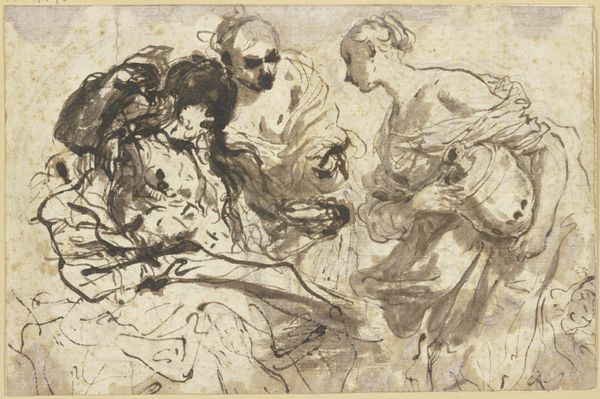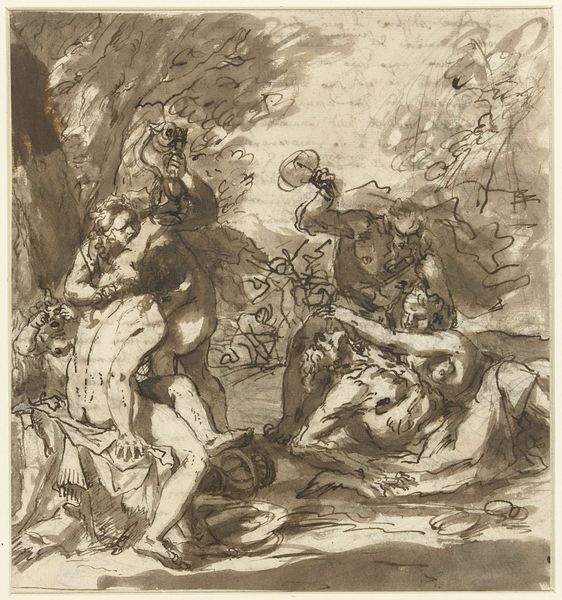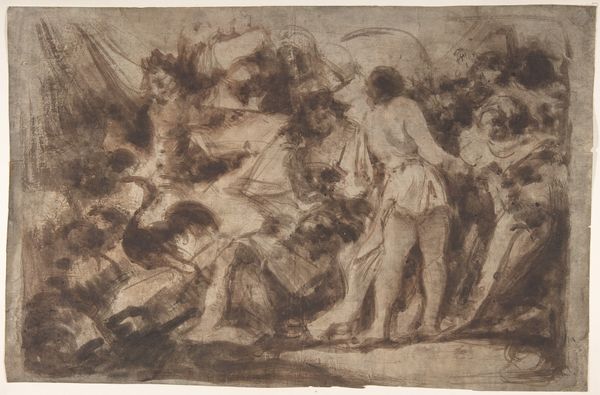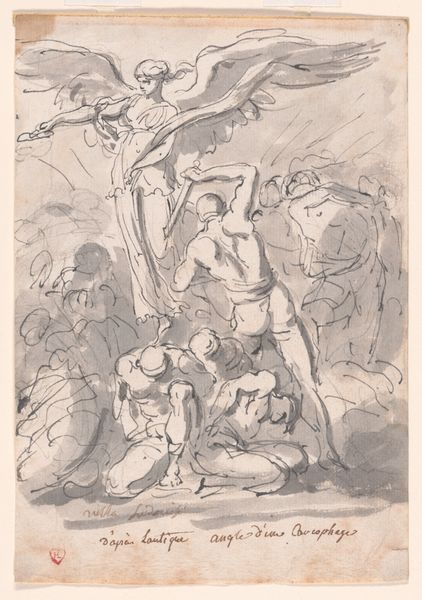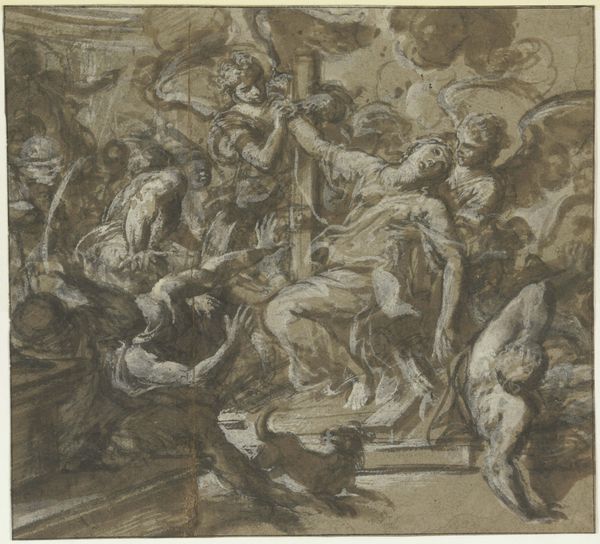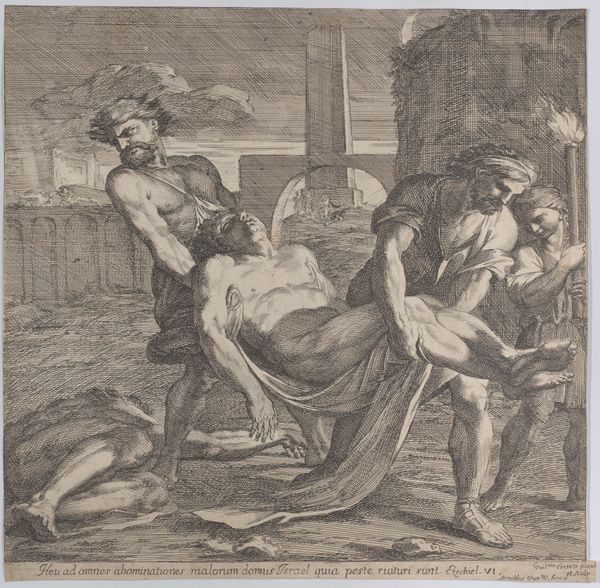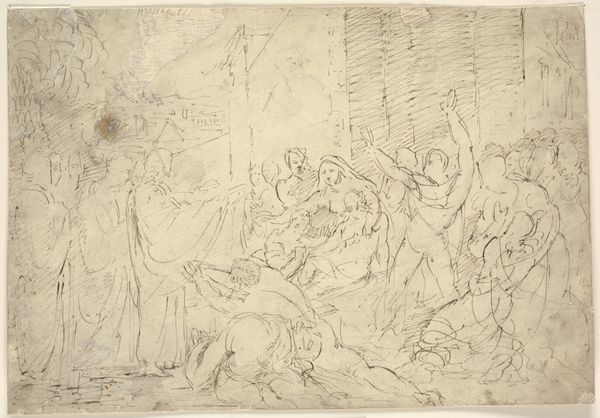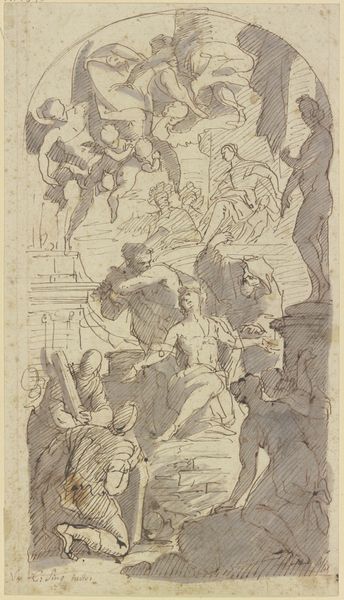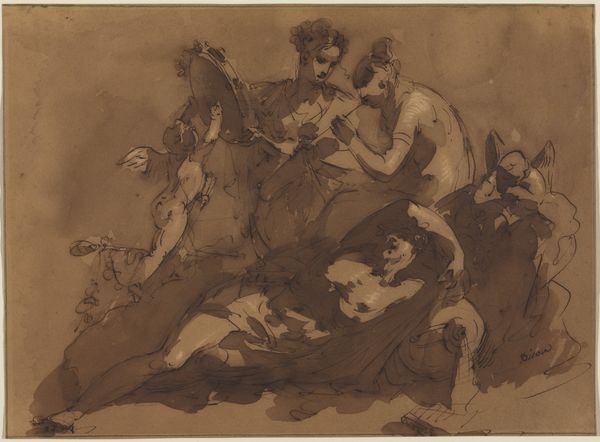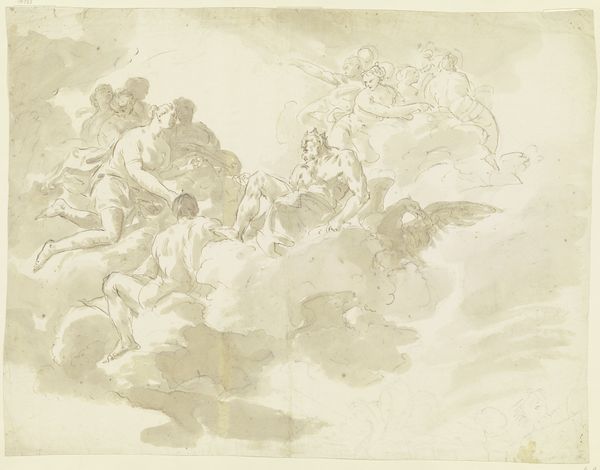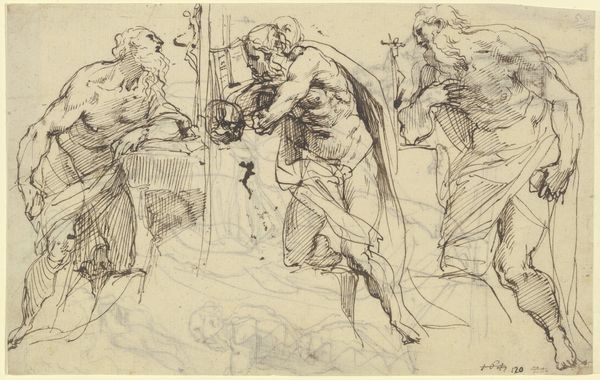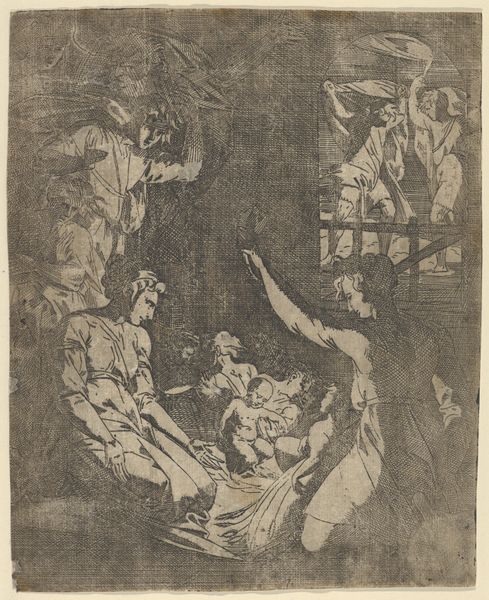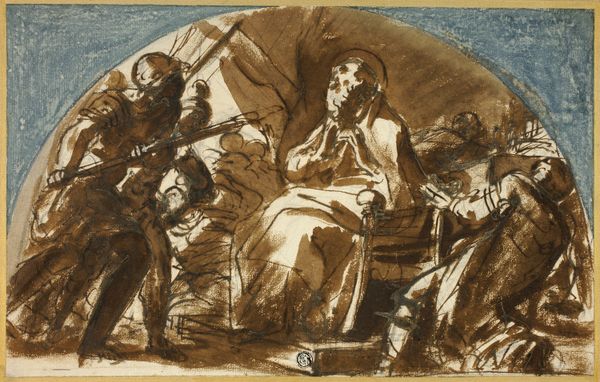
drawing, print, paper, ink
#
drawing
#
narrative-art
#
baroque
# print
#
pencil sketch
#
charcoal drawing
#
figuration
#
paper
#
oil painting
#
ink
#
pencil drawing
Dimensions: Sheet: 9 9/16 in. × 11 in. (24.3 × 28 cm)
Copyright: Public Domain
Curator: Welcome. Before us is Guercino’s 1619 drawing, “Samson Captured by the Philistines,” currently held here at the Metropolitan Museum of Art. The medium is listed as pen and brown ink with brown wash over black chalk on paper. Editor: Wow. Just, wow. You can practically feel the violence radiating off this piece. The flurry of motion, all those limbs… it’s a beautiful kind of chaos, really. A real struggle between freedom and captivity, light and dark. Curator: The Baroque period was quite interested in capturing precisely that—a kind of dynamism, the dramatic. Guercino positions the viewer to experience Samson's struggle and humiliation almost firsthand. Note the architecture—it looms imposingly, yet still recedes into sketchy darkness. Editor: It's almost like a theater set! Samson’s positioned on that... pedestal? It elevates the whole scene, making his fall seem even greater. Is he reclining or restrained? There’s something about the almost sensual way the light plays across his body... It's troubling. Curator: Troubling is perhaps the point. Here, Guercino echoes a longer art-historical tradition that portrays Samson not just as a Biblical strongman but also a tragic figure betrayed by those closest to him. This work reveals the moment his strength abandons him; it's really about the loss of power. Editor: The faces surrounding Samson… it’s hard to tell whether they are jeering, horrified, or filled with... glee? It speaks volumes, I think, about the various facets of human nature exposed by a moment of violent capture. The play of light, dark, all the ambiguous expressions! Curator: It highlights the complex, and at times ambivalent, representations of violence in art and history. A key tension, certainly for early modern artists, was to create compelling images while maintaining appropriate moral boundaries. And, here, Guercino also considers the art market, catering to a public that demanded skill, drama, and a sense of historical importance. Editor: Yes, but he also gifts the viewer this amazing range of visceral human responses. After looking at this, you have to step back and feel something... a tremor, perhaps a sigh... Guercino offers no simple, easy answers in rendering this terrible defeat. Curator: Exactly. Guercino forces us to wrestle with that tension. It reminds us of how images from the past speak to the present and maybe challenge our understanding of ourselves. Editor: And leaves you wonderfully uneasy about how complicated all these things truly are.
Comments
No comments
Be the first to comment and join the conversation on the ultimate creative platform.
